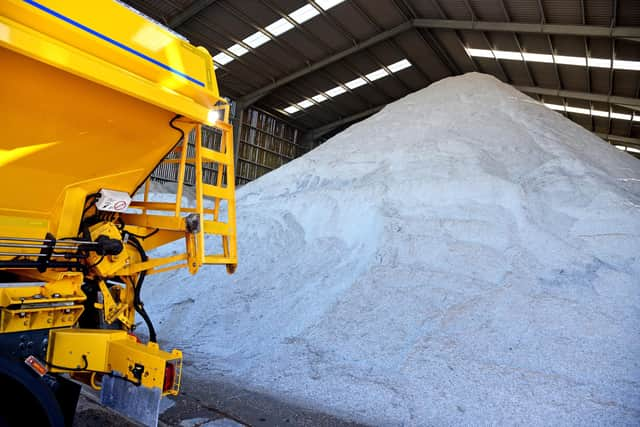Nottinghamshire road gritting crews ready for winter rush as night-time temperatures near freezing
and live on Freeview channel 276
There is currently around 17,851 tonnes of salt stored across four depots, where staff from Nottinghamshire County Council’s highways company Via East Midlands wait to be called into action.
That decision is taken day-by-day following the arrival of the MetDesk forecast at the Gritting Control Centre in Newark, and then instructions are communicated to Clive Stuchbury in Bilsthorpe and three other foremen in Gamston, Newark and Markham Moor.
Advertisement
Hide AdAdvertisement
Hide AdClive said: “The amount of salt we spread all depends on the forecast, but it is usually between 15 and 20 grams per square metre. That equates to around 135 to 200 tonnes of salt being used across the county.


"Some nights we have to go out more than once if the forecast is bad, but it’s all part of the job. It is a calm atmosphere when you’re out on the roads, as a team we enjoy it.”
Once the gritting lorries leave the depot, a process of careful monitoring begins as they travel along Nottinghamshire’s gritting routes.
Each lorry has a control box in the cab where the driver can programme the spreading rate and the spreading pattern depending on the forecast and size of the road.
Advertisement
Hide AdAdvertisement
Hide AdDespite a common misconception, the salt spread on the roads does not actually melt snow.


Clive said: “What actually happens is the salt mixes with any moisture on the road surface to form a saline solution.
“Salty water has a lower freezing point than water, and this is how gritting prevents ice from forming.”
He added: “Many people might think that when the gritters are out they should avoid travelling along gritted roads, but the reality is actually the opposite.
“Vehicles travelling on gritted roads helps the formation of the saline solution.”